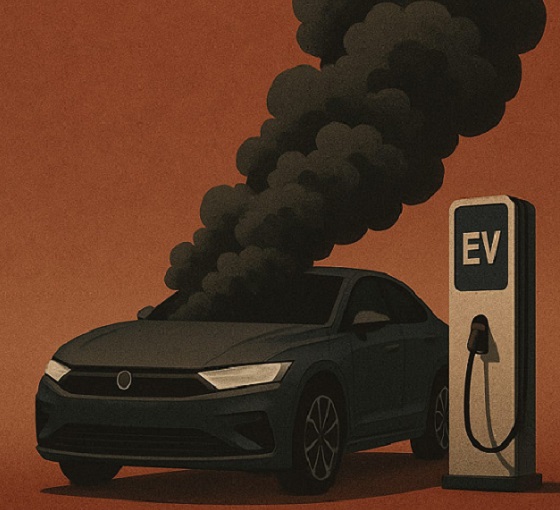Business
Out-Trumping Trump: A Mission Without a Win
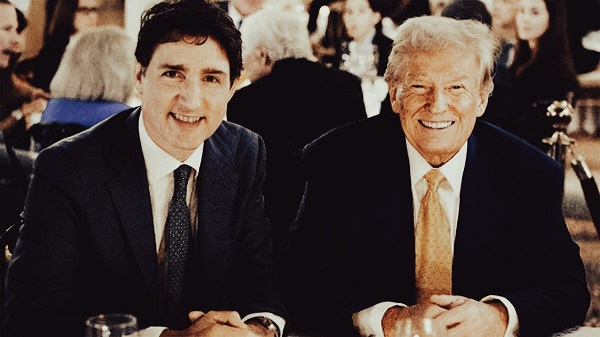
From the Frontier Centre for Public Policy
Diplomacy is often a world of planned whispers and subtle signals to communicate complex messages. So, even sleepy folks noticed when the PM made a much-publicized bold (and seemingly impromptu) move and flew to Florida to play Trump-Whisperer. What was the PM hoping to get from that appearance? The best way to evaluate such diplomatic moves is to measure results against expectations.
From start to finish, the trip read like Trump’s move, when the president flew in a similarly bold and unanticipated fashion to pacify the leader of North Korea, Kim Jong-un –the “Little Rocketman.” Trudeau’s trip to see Trump was modelled on Trump’s Korean trip; it was an attempt to out-Trump Trump. That was the expectation.
Amid talk of nuclear weapons deployment, Trump surprised the world in 2017 by going to North Korea to meet with the leader of the most insular country on the planet, a man the traditional media painted as an irrational lunatic. That is not unlike the image of Donald Trump that CBC and the MSM chorus in Canada present.
Similarly, Prime Minister Justin Trudeau surprised his followers and detractors, by flying to Mar-a-Lago, the capital of Trump’s world. The purpose was not to avoid a thermonuclear war but a trade war between the two countries. Such a trade war would hurt both countries but could devastate the “vibecessing” Canadian economy, which the Trudeau government is desperately trying to perk up expecting a general election in months.

The news was leaked once the Prime Minister was in the air heading south. A flood of commentators, who pretended to have no authority to speak on the subject, began to discuss what the trip meant and how brave and bold, silly or foolish, the Prime Minister was for undertaking it. This was like the attention surrounding Trump’s journey to North Korea.
The most surprising aspect of the announcement was that Trump had previously mocked and ridiculed the North Korean leader. While we don’t have direct insight into what the North Koreans called Trump at the other end, it was probably far from flattering. Consequently, it was hard to imagine how their interactions would play out. Many argued that the two men had nothing in common, often expressing this with professorial certainty.
There is no evidence that Prime Minister Trudeau has ever called Trump any nasty names in public, but Trump has not been as careful. After the G7 meeting in 2018, Trump referred to Trudeau as being “weak and dishonest.” However, we do know that Justin’s favourite boogeyman is the American “extreme-right,” of which progressive Canadians think Trump is the godfather. Whatever Trudeau and prominent government ministers think of Trump conservatives, they also think of Trump. There are many examples of how government members weaponized the concept. In October 2024, Deputy Prime Minister Chrystia Freeland addressed criticisms from Conservative MPs by stating she wasn’t intimidated by “juvenile playground insults from the wannabe MAGA maple syrup Conservatives.” Similarly, amid discussions about Prime Minister Trudeau’s leadership in October 2024, some government members referred to Conservative Leader Pierre Poilievre as “Maple MAGA” or “Canada’s Donald Trump,” expressing platitudes about threats to democracy. Readers might also recall how every lieutenant in the Trudeau legions pretended MAGA Trumpeteers and Trump himself had crushed Roe v. Wade and then claimed Canada’s Conservatives would do the same.
The PM, too, indulged in the same kind of attack during a July 2023 visit to the Baitun Nur Mosque in Calgary. During the event, Trudeau addressed concerns among the Muslim community regarding his support for the Transexual agenda and the claims of inclusive education in schools. He quickly invoked the anti-American narrative, shaming the man who posed the question for accepting what Trudeau labelled as radical right-wing American propaganda. Trudeau suggested that misinformation about Canada’s sexual education curriculum was being propagated by “the American right-wing,” which he argued was causing unnecessary division and fear among Canadians.
Many people were surprised to see Trump attempting what others had never tried in North Korea. That reaction was akin to that of Canadians who knew what Trudeau and his cabinet had said about Donald Trump and the American right. For Prime Minister Trudeau it was a victory to show pictures of his foray into Trumpian Mordor, giving him the chance to appoint himself the hero who will stop the detonation of a 20 percent tariffs trade bomb.
Immediately following the US election, the Trudeau cabinet quickly backtracked on the Trump insults. They suddenly forgot how they were presenting Trump as the figure behind Pierre Poilievre and his “extreme right-wing politics.” This was done with the same enthusiasm that Trudeau’s critics summon when joking about his supposed genetic connection to Fidel Castro.
Trump’s visit to North Korea reduced some of the heated rhetoric between the two countries; however, the North Korean Stalinist regime remains intact, along with its nuclear capabilities. Trump and Kim Jong-un did not sign any treaty to regulate nuclear weapons or establish lasting peace between their nations. Similarly, Prime Minister Trudeau returned from Florida without any significant outcomes.
There was no joint statement or announcement of an agreement. There were promises to continue discussions, which does not constitute a victory. All Trudeau can claim is a public relations victory like the one Trump touted after his return from North Korea, and that is not insignificant. But showing that Trump was not mean to him is hardly a diplomatic victory.
Trump provided Trudeau with opportunities for photo sessions without conceding anything or making any promises. He maintained his firm demand that Canada strengthen its border security to prevent drugs and potential terrorists from crossing freely. Trump takes satisfaction in the fact that a man he despises travelled to plead with him for leniency regarding his tariff threats. He is fully aware of this dynamic.
Prime Minister Trudeau may portray himself as someone who understands Trump well, but Trump holds the upper hand. He knows Trudeau is “weak” and desperately desires to maintain himself in power, despite his low popularity. Furthermore, Trump understands that Trudeau is willing to make significant political sacrifices to achieve a seemingly favourable resolution to the border issues. Trudeau badly needs a win, and Trump knows that Trudeau is willing to jeopardize his country’s economy to win. Consequently, Trump will likely capitalize on Trudeau’s vulnerabilities for all they are worth.
Trump understands that Trudeau is the ideal Canadian leader to engage with him, which should make Trudeau the least suitable person to negotiate with Trump if Canada’s interests are to be protected.
From that perspective, Trudeau’s trip to Florida is unlike Trump’s trip to North Korea. While both leaders sought to leverage their trips for political and public relations gains, the outcomes reveal the limitations of symbolic diplomacy and Trudeau’s inability to turn the trip into a long-term win. The latter is as much a function of the PM’s lack of skill as it is of the perception among voters that he is veritably done, no matter what.
Prime Minister Trudeau believes he is the only one who can deal with Trump from a position of strength, which is incorrect. His government has gimmicks but no strength left. That is why the prime minister pleads for a Team Canada approach to Trump and quickly condemns skepticism of his abilities as a national betrayal.
Trump will take advantage of that weakness –and if he can nail a man he despises as weak and woke, he will enjoy it the more. Out-Trumping Trump for domestic advantage was a fool’s errand.
Marco Navarro-Genie is VP Policy and Research at the Frontier Centre for Public Policy. He is co-author, with Barry Cooper, of COVID-19: The Politics of a Pandemic Moral Panic (2020).
Automotive
Ford’s EV Fiasco Fallout Hits Hard
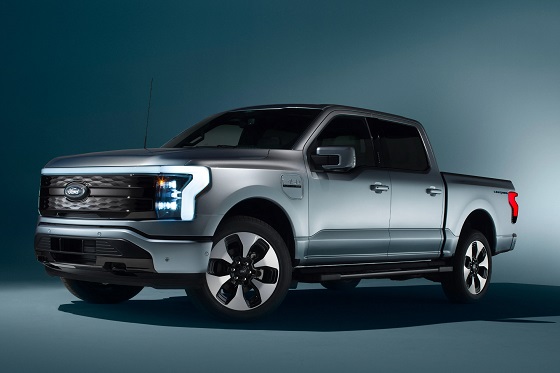

From the Daily Caller News Foundation
I’ve written frequently here in recent years about the financial fiasco that has hit Ford Motor Company and other big U.S. carmakers who made the fateful decision to go in whole hog in 2021 to feed at the federal subsidy trough wrought on the U.S. economy by the Joe Biden autopen presidency. It was crony capitalism writ large, federal rent seeking on the grandest scale in U.S. history, and only now are the chickens coming home to roost.
Ford announced on Monday that it will be forced to take $19.5 billion in special charges as its management team embarks on a corporate reorganization in a desperate attempt to unwind the financial carnage caused by its failed strategies and investments in the electric vehicles space since 2022.
Cancelled is the Ford F-150 Lightning, the full-size electric pickup that few could afford and fewer wanted to buy, along with planned introductions of a second pricey pickup and fully electric vans and commercial vehicles. Ford will apparently keep making its costly Mustang Mach-E EV while adjusting the car’s features and price to try to make it more competitive. There will be a shift to making more hybrid models and introducing new lines of cheaper EVs and what the company calls “extended range electric vehicles,” or EREVs, which attach a gas-fueled generator to recharge the EV batteries while the car is being driven.
Dear Readers:
As a nonprofit, we are dependent on the generosity of our readers.
Please consider making a small donation of any amount here.
Thank you!
“The $50k, $60k, $70k EVs just weren’t selling; We’re following customers to where the market is,” Farley said. “We’re going to build up our whole lineup of hybrids. It’s gonna be better for the company’s profitability, shareholders and a lot of new American jobs. These really expensive $70k electric trucks, as much as I love the product, they didn’t make sense. But an EREV that goes 700 miles on a tank of gas, for 90% of the time is all-electric, that EREV is a better solution for a Lightning than the current all-electric Lightning.”
It all makes sense to Mr. Farley, but one wonders how much longer the company’s investors will tolerate his presence atop the corporate management pyramid if the company’s financial fortunes don’t turn around fast.
To Ford’s and Farley’s credit, the company has, unlike some of its competitors (GM, for example), been quite transparent in publicly revealing the massive losses it has accumulated in its EV projects since 2022. The company has reported its EV enterprise as a separate business unit called Model-E on its financial filings, enabling everyone to witness its somewhat amazing escalating EV-related losses since 2022:
• 2022 – Net loss of $2.2 billion
• 2023 – Net loss of $4.7 billion
• 2024 – Net loss of $5.1 billion
Add in the company’s $3.6 billion in losses recorded across the first three quarters of 2025, and you arrive at a total of $15.6 billion net losses on EV-related projects and processes in less than four calendar years. Add to that the financial carnage detailed in Monday’s announcement and the damage from the company’s financial electric boogaloo escalates to well above $30 billion with Q4 2025’s damage still to be added to the total.
Ford and Farley have benefited from the fact that the company’s lineup of gas-and-diesel powered cars have remained strongly profitable, resulting in overall corporate profits each year despite the huge EV-related losses. It is also fair to point out that all car companies were under heavy pressure from the Biden government to either produce battery electric vehicles or be penalized by onerous federal regulations.
Now, with the Trump administration rescinding Biden’s harsh mandates and canceling the absurdly unattainable fleet mileage requirements, Ford and other companies will be free to make cars Americans actually want to buy. Better late than never, as they say, but the financial fallout from it all is likely just beginning to be made public.
- David Blackmon is an energy writer and consultant based in Texas. He spent 40 years in the oil and gas business, where he specialized in public policy and communications.
Business
Ottawa Pretends To Pivot But Keeps Spending Like Trudeau
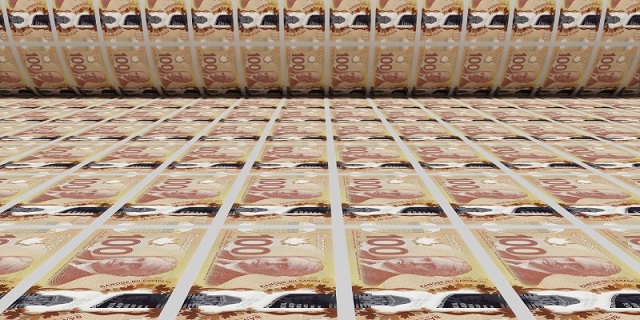
From the Frontier Centre for Public Policy
New script, same budget playbook. Nothing in the Carney budget breaks from the Trudeau years
Prime Minister Mark Carney’s first budget talks reform but delivers the same failed spending habits that defined the Trudeau years.
While speaking in the language of productivity, infrastructure and capital formation, the diction of grown-up economics, it still follows the same spending path that has driven federal budgets for years. The message sounds new, but the behaviour is unchanged.
Time will tell, to be fair, but it feels like more rhetoric, and we have seen this rhetoric lead to nothing before.
The government insists it has found a new path, one where public investment leads private growth. That sounds bold. However, it is more a rebranding than a reform. It is a shift in vocabulary, not in discipline. The government’s assumptions demand trust, not proof, and the budget offers little of the latter.
Former prime ministers Jean Chrétien and Paul Martin did not flirt with restraint; they executed it. Their budget cuts were deep, restored credibility, and revived Canada’s fiscal health when it was most needed. Ottawa shrank so the country could grow. Budget 2025 tries to invoke their spirit but not their actions. The contrast shows how far this budget falls short of real reform.
Former prime minister Stephen Harper, by contrast, treated balanced budgets as policy and principle. Even during the global financial crisis, his government used stimulus as a bridge, not a way of life. It cut taxes widely and consistently, limited public service growth and placed the long-term burden on restraint rather than rhetoric. Carney’s budget nods toward Harper’s focus on productivity and capital assets, yet it rejects the tax relief and spending controls that made his budgets coherent.
Then there is Justin Trudeau, the high tide of redistribution, vacuous identity politics and deficit-as-virtue posturing. Ottawa expanded into an ideological planner for everything, including housing, climate, childcare, inclusion portfolios and every new identity category.
The federal government’s latest budget is the first hint of retreat from that style. The identity program fireworks are dimmer, though they have not disappeared. The social policy boosterism is quieter. Perhaps fiscal gravity has begun to whisper in the prime minister’s ear.
However, one cannot confuse tone for transformation.
Spending still rises at a pace the government cannot justify. Deficits have grown. The new fiscal anchor, which measures only day-to-day spending and omits capital projects and interest costs, allows Ottawa to present a balanced budget while still adding to the deficit. The budget relies on the hopeful assumption that Ottawa’s capital spending will attract private investment on a scale economists politely describe as ambitious.
The housing file illustrates the contradiction. New funding for the construction of purpose-built rentals and a larger federal role in modular and subsidized housing builds announced in the budget is presented as a productivity measure, yet continues the Trudeau-era instinct to centralize housing policy rather than fix the levers that matter. Permitting delays, zoning rigidity, municipal approvals and labour shortages continue to slow actual construction. These barriers fall under provincial and municipal control, meaning federal spending cannot accelerate construction unless those governments change their rules. The example shows how federal spending avoids the real obstacles to growth.
Defence spending tells the same story. Budget 2025 offers incremental funding and some procurement gestures, but it avoids the core problem: Canada’s procurement system is broken. Delays stretch across decades. Projects become obsolete before contracts are signed. The system cannot buy a ship, an aircraft or an armoured vehicle without cost overruns and missed timelines. The money flows, but the forces do not get the equipment they need.
Most importantly, the structural problems remain untouched: no regulatory reform for major projects, no tax-competitiveness agenda and no strategy for shrinking a federal bureaucracy that has grown faster than the economy it governs. Ottawa presides over a low-productivity country but insists that a new accounting framework will solve what decades of overregulation and policy clutter have created. The budget avoids the hard decisions that make countries more productive.
From an Alberta vantage, the pivot is welcome but inadequate. The economy that pays for Confederation receives more rhetorical respect, yet the same regulatory thicket that blocks pipelines and mines remains intact. The government praises capital formation but still undermines the key sectors that generate it.
Budget 2025 tries to walk like Chrétien and talk like Harper while spending like Trudeau. That is not a transformation. It is a costume change. The country needed a budget that prioritized growth rooted in tangible assets and real productivity. What it got instead is a rhetorical turn without the courage to cut, streamline or reform.
Canada does not require a new budgeting vocabulary. It requires a government willing to govern in the country’s best interests.
Marco Navarro-Genie is vice-president of research at the Frontier Centre for Public Policy and co-author with Barry Cooper of Canada’s COVID: The Story of a Pandemic Moral Panic (2023).
-

 Community2 days ago
Community2 days agoCharitable giving on the decline in Canada
-

 Business2 days ago
Business2 days agoCanada’s recent economic growth performance has been awful
-

 Alberta2 days ago
Alberta2 days agoCanada’s New Green Deal
-

 armed forces2 days ago
armed forces2 days agoOttawa’s Newly Released Defence Plan Crosses a Dangerous Line
-

 Alberta1 day ago
Alberta1 day agoAlberta’s huge oil sands reserves dwarf U.S. shale
-
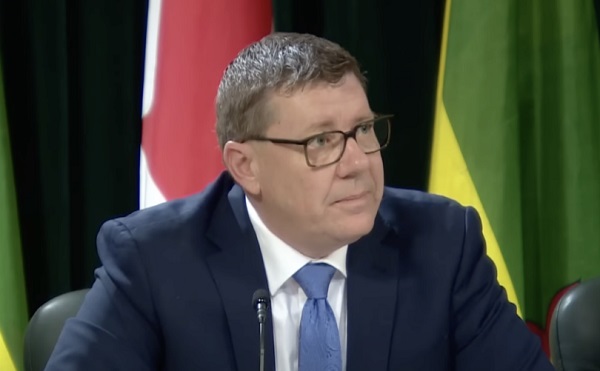
 Health1 day ago
Health1 day agoSaskatchewan woman approved for euthanasia urged to seek medical help in Canada rather than US
-
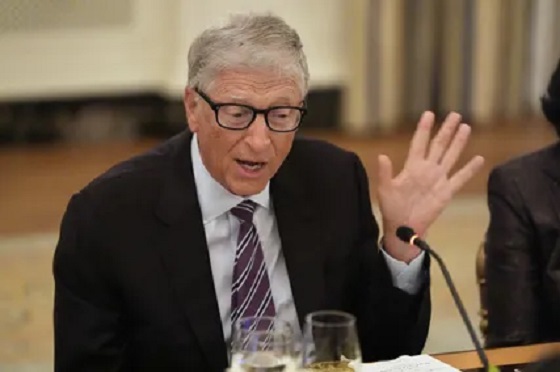
 Business2 days ago
Business2 days agoCOP30 finally admits what resource workers already knew: prosperity and lower emissions must go hand in hand
-
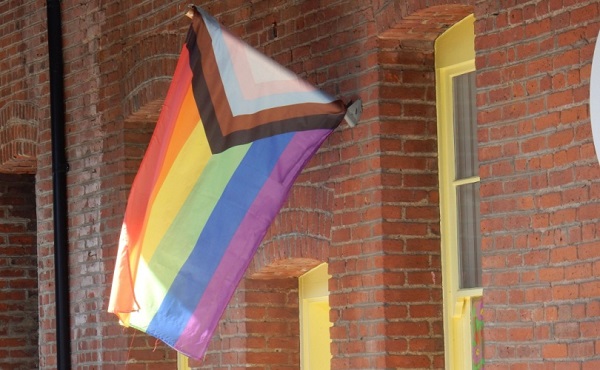
 Health1 day ago
Health1 day agoCanadian gov’t considers sharing census data on gender-confused children






